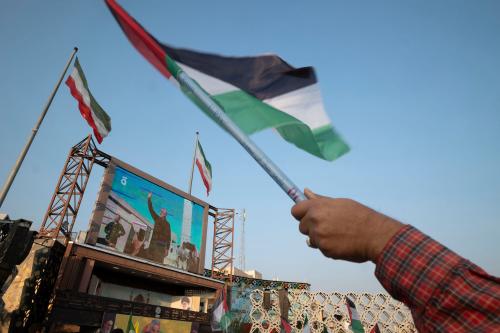One of the many nightmares that followed the Sept. 11 attacks was the thought that more terrorists might be hiding in the United States, ready to strike at a moment’s notice. The possibilities were endless—and frightening. Millions pass through America’s open doors every day, many disappearing without much of a trace. After the attacks the F.B.I. discovered that no fewer than 70,000 Saudi men, their ages ranging from 18 to 35, had entered the United States between December 2000 and August 2001. None were likely to pose a threat, but how could you really know?
To reduce the chance of another attack, thousands of foreigners were detained on minor immigration violations. Many were kept incommunicado until they were deported. The president ordered the Pentagon to set up military tribunals as a swift means to bring terrorists to justice. The F.B.I.’s mission changed from catching those who had committed crimes to preventing those who might attack from doing so. Congress passed the USA Patriot Act, giving the federal government sweeping new powers, not least by breaking down the wall between intelligence information gathered overseas and law enforcement here at home.
Armed with these new powers, the federal authorities scoured the land in search of terrorist sleeper cells. The first seeming success came a year after the twin towers were brought down, when the Justice Department announced that it had “identified, investigated and disrupted a Qaeda-trained terrorist cell on American soil.” Six Americans of Yemeni descent were arrested in Lackawanna, N.Y., a small town just south of Buffalo. They were charged with training with a terrorist organization.
President Bush hailed the arrest months later as proof that America was winning the war on terror. “We have broken Al Qaeda cells in Hamburg, Milan, Madrid, London, Paris, as well as Buffalo, N.Y.,” he told the nation last January in his State of the Union address.
The story of the Lackawanna Six, as the young men became known, is the subject of tonight’s edition of “Frontline” on PBS. Based on joint reporting with The New York Times (which on Sunday published a 10,000-word article on the case by Matthew Purdy and Lowell Bergman), “Frontline” takes us into the complexities of the fight against terror at home. Through interviews with top government officials, the F.B.I. agents who worked on the case and with one of the men charged, the report recounts how the Muslim Americans fell prey to a Qaeda recruiter in Lackawanna, set off for training in terrorist camps in Afghanistan, met with Osama bin Laden when he hailed martyrdom missions, and then returned home in the summer of 2001, apparently to resume their normal lives.
The matter-of-fact exposition of how Al Qaeda recruits and trains is sobering. But the “Frontline” report is more than a chilling tale. It is above all a careful account of the quandary that confronts the United States as it seeks to prevent another 9/11: how to thwart an attack without curtailing the freedoms all Americans now take for granted.
The Lackawanna six are Americans. They were born here and went to local schools, and some were married with children. In the months just after the F.B.I. received an anonymous letter in May 2001, saying that the men had gone to Afghanistan to train at Qaeda camps, the bureau failed to substantiate the charges. When asked, the men said they had gone to Pakistan for religious training and denied any connection with Al Qaeda. Their story did not change after the Sept. 11 attacks, and without more evidence, there was nothing the F.B.I. could do.
“Inside the borders of the United States, there is the rule of law,” Peter Ahearn, the special agent in charge of the F.B.I.’s operations in Buffalo and western New York, says in the “Frontline” report. “We had U.S. citizens. I was not just going to go up and scoop them off the street.”
Yet there were plenty of reasons to worry. Could this be a sleeper cell? The F.B.I. and local authorities kept a close watch in the months after Sept. 11. F.B.I. headquarters were updated on the status of the investigation twice daily; the president was briefed frequently. But there was not enough evidence to charge the men, and no sign of a terrorist plot.
The case was finally broken open in the summer of 2002. Confronted with evidence obtained through electronic surveillance and other means, the six admitted that they had gone to Afghanistan the previous year and pleaded guilty to training with a terrorist organization. The successful investigation demonstrated the value of sharing government intelligence with law enforcement officials. But even that information could not reveal why the six had gone halfway around the world. Were they terrorists waiting to strike or just young men who were seriously misled?
“Frontline” does not provide an answer, but its judicious, insightful report forces us to ponder the question and its stark implications for the world we all live in now.



Commentary
The First Home-Front Battle in the War on Terror
October 16, 2003